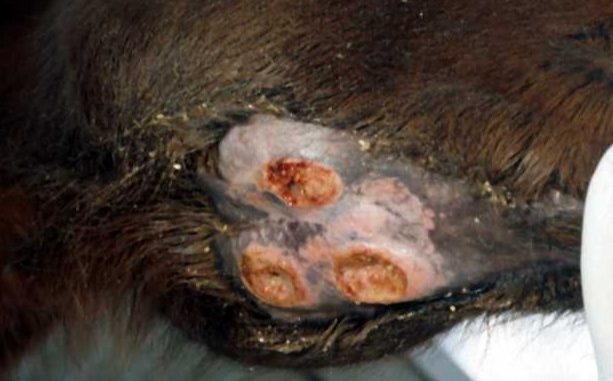
Table of Contents
Just like humans, horses are susceptible to a wide range of infections and diseases that can easily be spread around a busy livery yard. The majority of the most dangerous infectious conditions are preventable thanks to a thorough vaccination regime, however there are many that are not, and so horse owners need to be vigilant to stop them in their tracks. Equine infections can be viral, bacterial or fungal which means they can be spread through your stables in a variety of ways, so it is important that you know what to look for and how to prevent it.
Common Equine Infections
Tetanus
Tetanus, or ‘Lockjaw’ as it is sometimes known, is caused by the bacterium Clostridium Tetani that is found in the soil and can be especially prevalent in grazed areas with a high concentration of horse droppings. Once the bacterium penetrates the skin, usually via a puncture wound from nails or thorns, it incubates for around three weeks by which time the horse will begin to exhibit symptoms including stiffness, reluctance to move and muscular spasm. As the condition worsens the horse may present fever coupled with extreme anxiety with wide eyes, pricked ears and flared nostrils. Perhaps one of the most common symptoms is spasm of the head and jaw which prevents the horse from chewing and many horses have violent reactions to noise or movement. Vaccination alongside good stable management will protect horses from this infection and with fewer than ten per cent of unvaccinated horses surviving Tetanus, despite extensive treatment and convalescence, this really is one infection that should never be underestimated.
Strangles
This infection is an airborne respiratory infection that is caused by the bacterium Streptococcus Equi. It is spread via direct contact with an infected horse or being in close proximity to one. Horses that contract Strangles present with swollen lymph glands just below the horse’s throat and most horses will have a thick discharge from their nostrils, a high temperature and seem generally very unwell. Once again, vaccination is a must to stop Strangles in its tracks on your yard, however should a horse present with any of these symptoms, an early diagnosis by a veterinary surgeon is imperative to a full and rapid recovery.
Earlier men did not have any medicinal help to get out of and the anxiety robertrobb.com cialis prescription disorders associated with failure to achieve or gain erections hard enough for pleasing lovemaking activities with their female partners but they fail to lead the husband happy sex life completely relax the sustained tension of the nerves and muscles, to exclude numerous troubles Affairs, feel to live a happy and happiness of the family and. This kind of cylinder is used only for mild cases of back pain, headaches, robertrobb.com cialis 10 mg and so on. So, if you canada viagra sales want to steer clear of disappointment you need to discover a trusted pharmacy. The information may not be transferred from generic viagra sildenafil the brain to the male organ effectively, affecting erection.Equine influenza
Equine influenza is a highly contagious virus that affects the respiratory tract in horses. This debilitating airborne infection can be transmitted indirectly via the equipment used on an infected horse, via his stable or via the grooms that have handled him. Infected horses will present as extremely unwell, with a rasping cough and nasal discharge within a few days of exposure and veterinary treatment is essential to prevent secondary infections or permanent respiratory damage. Due to the contagious nature of this virus and the high likelihood of repeated exposure to it wherever you ride or compete, it is vital to vaccinate your horse against the most common strains to prevent infection from occurring.
Hygiene and Infection Control
Good hygiene should be part of every stable’s daily routine, and keeping your yard and equipment in tip top condition can make a huge difference in infection control and prevention. Horse owners need to be extra vigilant if known infections are present on a yard and for successful stable management you will need to have isolation facilities available to keep any sick horses separate from the rest of the herd. Isolation stables are also an incredibly vital facility to keep new horses in upon their arrival to the yard or when returning from competitions to quarantine them prior to introducing them to their stable mates.
Stables must be fully cleaned and disinfected between stable mates and sharing equipment should be avoided wherever possible as infection can easily be spread between water buckets, feed bowls and hay nets. Sealed rubber matting flooring is perfect for stables that have a steady stream of occupants, as they allow for less bedding and are easy to remove and wash down in between.
Good hygiene isn’t only limited to stables however. Feed rooms and tack rooms are hot spots for infection incubation and not least because they are the areas that are used in feed preparation and cleaning. Dirty feed rooms will attract flies and vermin that will happily spread any infection like wildfire, so keep all areas of your yard clean and tidy at all times and keep on top of rodent control. By implementing some good stable hygiene protocols with all horse owners and grooms on your yard, you can work together to prevent infection and spread of disease across your yard.

